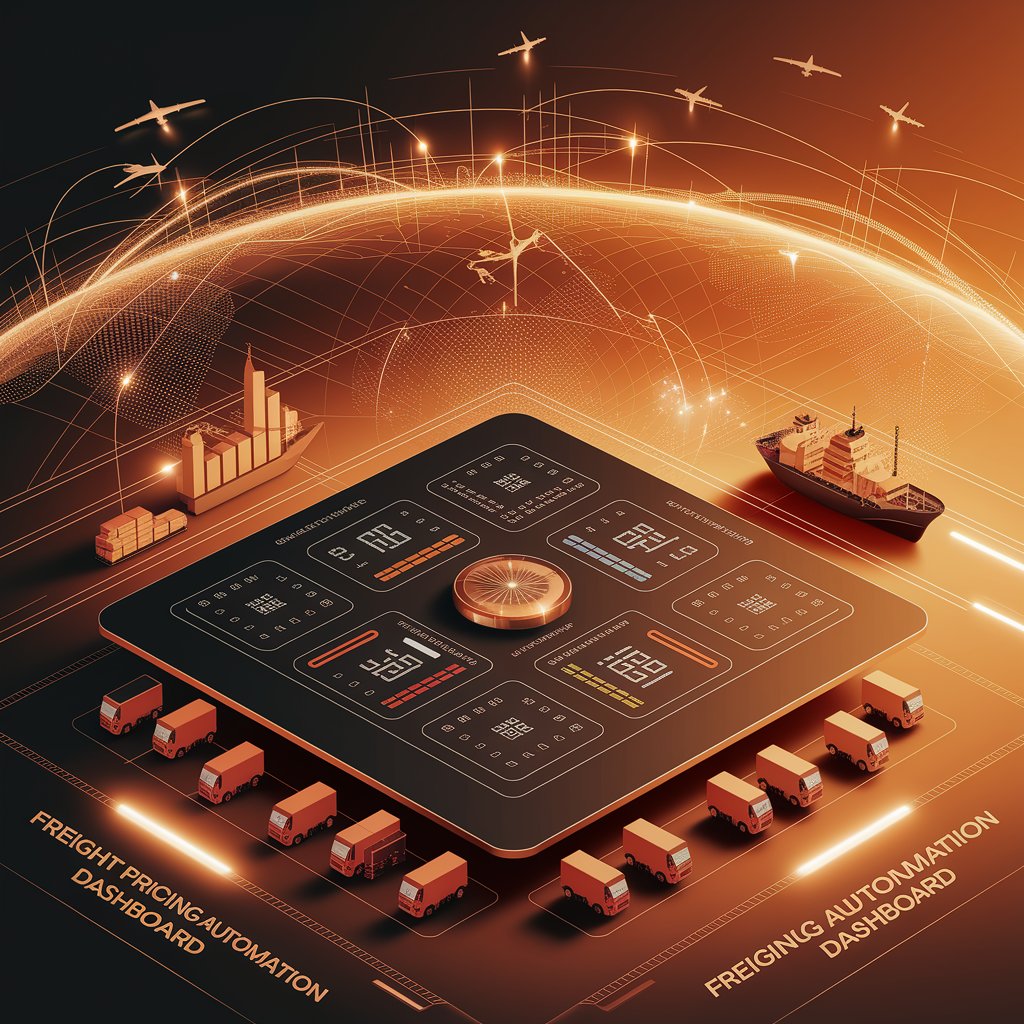Freight Pricing Automation: Smarter, Faster, and More Competitive Logistics

Introduction
Enter freight pricing automation. By leveraging AI, digital platforms, and real-time data, companies can generate accurate, competitive freight rates instantly. This not only improves efficiency but also strengthens customer relationships in an increasingly competitive market.
What Is Freight Pricing Automation?
Freight pricing automation is the use of digital systems and AI-driven algorithms to automatically calculate shipping rates. Instead of relying on manual input, the system integrates data from:
- Carrier contracts
- Market benchmarks
- Fuel indexes
- Historical shipments
- Real-time capacity availability
The result: dynamic, accurate pricing delivered instantly to customers and sales teams.

Key Features of Freight Pricing Automation
- Dynamic Rate Calculation – Adjusts prices based on demand, capacity, and fuel fluctuations.
- Multi-Carrier Comparison – Instantly compare rates across multiple carriers.
- Integration with ERP & TMS – Sync pricing directly into booking and invoicing systems.
- AI & Predictive Analytics – Forecast pricing trends and market shifts.
- Instant Customer Quotes – Provide accurate rates in seconds, improving sales response.
- Custom Pricing Rules – Apply discounts, surcharges, or contractual agreements automatically.
Benefits of Freight Pricing Automation 📈
- Speed – Generate quotes instantly instead of hours or days.
- Accuracy – Reduce errors caused by manual calculations.
- Cost Savings – Optimize margins by aligning rates with real-time costs.
- Customer Satisfaction – Faster, more transparent quotes improve trust.
- Scalability – Handle thousands of pricing requests without additional staff.
- Competitive Advantage – Win more bids with data-driven, market-aligned pricing.

Real-World Applications
- Freight Forwarders – Automate rate quoting for air, ocean, and trucking services.
- Carriers – Dynamically adjust pricing based on fleet capacity and demand.
- 3PL Providers – Offer clients instant quotes with built-in contract compliance.
- E-commerce & Retail – Integrate automated pricing into shipping calculators.
- Global Enterprises – Standardize freight pricing across multiple regions.
Challenges in Freight Pricing Automation
- Data Quality – Inaccurate or outdated contracts can lead to wrong pricing.
- Integration Barriers – Legacy ERP and TMS systems may not support automation.
- High Setup Costs – Requires investment in digital infrastructure.
- Market Volatility – Extreme disruptions can outpace algorithm updates.
- Change Resistance – Sales teams may be hesitant to rely on automated systems.

Best Practices for Implementation
- Start with High-Volume Routes – Automate pricing where most quotes occur.
- Ensure Clean Data – Standardize contracts, tariffs, and fuel indexes.
- Integrate Across Platforms – Connect ERP, TMS, and CRM for seamless workflows.
- Leverage AI Forecasting – Use predictive tools to anticipate rate shifts.
- Customize Rules – Tailor automation to reflect business strategies and client agreements.
- Monitor & Refine – Continuously improve accuracy with feedback loops.
Future of Freight Pricing Automation 🚀
- AI-Powered Dynamic Pricing – Systems that adjust rates instantly based on live market conditions.
- Blockchain for Contracts – Secure, tamper-proof freight rate agreements.
- Self-Optimizing Platforms – Pricing engines that learn and adapt automatically.
- Customer Self-Service Portals – Clients accessing real-time quotes 24/7.
- Green Pricing Models – Rates that factor in carbon footprint and sustainability.
Conclusion
Freight pricing automation is transforming how logistics companies set and manage rates. By eliminating manual errors, speeding up quotes, and aligning pricing with real-time data, businesses gain efficiency and competitiveness.
In an industry where margins are tight and speed matters, adopting freight pricing automation is not just about saving time—it’s about building smarter, more profitable logistics operations.
